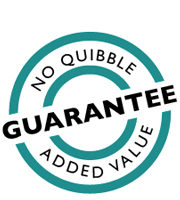Methods of costing

Different industries adopt different methods for determining the costs of their products and services. Commonly used costing methodologies include:
- Standard costing – under this technique, average standard costs are estimated even before the actual expenditures are incurred. Once actual costs have been incurred, these are then compared with the standard costs and the differences analysed.
- Marginal costing – the purpose of marginal costing is to study the relationship of how costs vary with volume. Understanding this relationship can be very important for new products especially if there is scope for volume growth and economies of scale productivity gains. Marginal costing is also known as variable costing or differential costing.
- Job costing – job costing is concerned with the determining the cost of each job or work order. Job costing is commonly used within professional services and by tradesmen.
- Contract costing – contract costing is used to cost contract work such as the construction of a new hospital or the refurbishment of a school. Each contract or job is treated as separate cost unit, and in principle, contract costing is no different from job costing.
- Batch costing – a batch is a group of identical products, and under batch costing, the batch is treated as one unit for the purpose of determining its cost. The total cost of the batch is divided by the total number of units in the batch to arrive at the average cost per unit. This method of costing is used in batch manufacturing industries.
- Operation costing – operation costing is suitable for industries where production is continuous and the units produced are exactly identical to each other. This method is used in industries such as fast moving consumer goods and mining.
- Process costing – process costing is used in industries where production is carried on through different stages or processes before becoming a finished product. Costs are determined separately for each process. The main feature of process costing is that output of one process becomes the raw materials of another process until the final product is obtained. This type of costing is used in industries such as textiles, chemicals and oil refining.
- Multiple or composite costing – composite costing is the combination of two or more of the above methods of costing. When a product comprises many components and assembled parts (for example an aircraft or motor vehicle) costs have to be ascertained for each component as well as for the finished product, and thus different methods of costing may be used at different stages.
Whichever costing method is used, it is important to understand:
- Whether the cost is an average or marginal cost
- What is included within the cost
- What is excluded from the cost
- What components of the cost are cash costs
- What components of the cost are non cash costs (i.e. depreciation and amortisation of goodwill)
To discuss your business critical issue
Please call Paul New on 020 8390 9972 or 07790 501225 or send a message.







